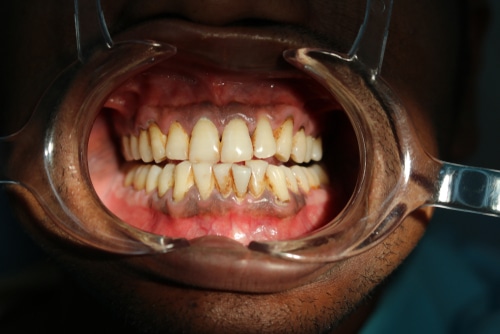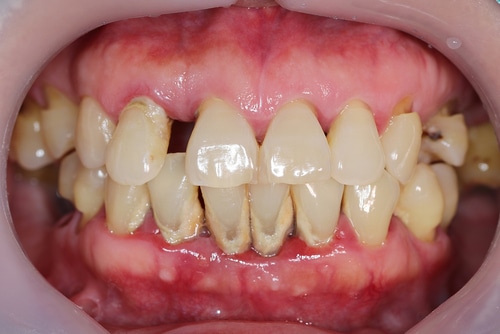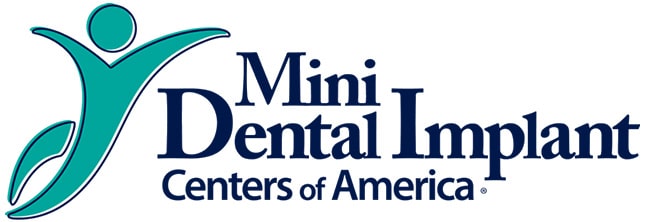Periodontal Treatment in Union City, NJ
Caring for your oral health by providing periodontal treatment for gum disease in New Jersey and New York City
Maintaining good oral hygiene includes more than just brushing your teeth; it means having regular professional cleanings, flossing regularly, and taking care of your gums. Losing teeth as we get older isn’t a “natural” part of aging, and with good oral hygiene, people can keep their natural teeth for their entire lives.
Taking care of your teeth is one of the most important ways to avoid tooth loss and oral issues, but you must also take care of your gums. Taking steps to avoid or treat gum disease (periodontal disease) is vital. Don’t let gum disease steal your smile; learn about our periodontal treatment options today.
What Is Periodontal Disease?
Periodontal disease, also known as gum disease, is a bacterial infection that can challenge the health of your teeth and threaten you with tooth loss.
The infection affects the structures that surround your teeth, which include:
- the gums
- the bone that supports the teeth
- the periodontal ligaments
Each of these structures plays an important role in your mouth’s shape, health, and function. Learn how periodontal treatment can help.
The Gums
 Our gums are made of tissue that is covered with a mucous membrane called the oral mucosa. This mucous membrane protects the mouth from injury and germs and helps keep the mouth clean. Also known as the gingiva, healthy gums should be pink and shouldn’t bleed when flossed or brushed.
Our gums are made of tissue that is covered with a mucous membrane called the oral mucosa. This mucous membrane protects the mouth from injury and germs and helps keep the mouth clean. Also known as the gingiva, healthy gums should be pink and shouldn’t bleed when flossed or brushed.
The Alveolar Bone
The tooth-supporting bone is called the alveolar bone, or alveolar process. It’s the thick strip of bone on each jaw that contains tooth sockets and holds your teeth in place.
The alveolar bone contains fibers, blood vessels, and nerves. The alveolar bone comes into contact directly with a tooth’s root through the socket lining. It’s a compact, hard bone and not spongy or soft.
Periodontal Ligament
Also known as the periodontal membrane, the periodontal ligament (PDL) helps teeth adhere to the gums. This ligament is actually a group of soft connective tissue fibers that anchors the roots of teeth in the alveolar bone sockets.
It’s embedded between the inner wall of the alveolar bone socket and the cementum — the hard dental tissue that covers the roots of your teeth.
Periodontal treatment can help repair any of the above structures and ensure you have a healthy and beautiful smile.
Taking Care of the Gums, Bones, and Ligaments
Maintaining healthy gums, supporting the alveolar bone, and maintaining healthy periodontal ligaments (and subsequently, your entire jawbone) can be done by taking care of your teeth and gums.
Taking Care of Your Teeth
When you properly maintain healthy teeth, the chance of teeth falling out or needing extractions is quite low. When a tooth is extracted, if it is not replaced with a mini dental implant, the alveolar bone and jawbone will shrink, losing volume and density.
Taking Care of Your Gums
The best thing you can do to avoid periodontal disease is to take care of your gums. When periodontal disease does set in, it can spread from the gums to the alveolar bone, which can eventually cause tooth loss. This is especially true in cases of severe periodontal disease.
It’s important that you avoid developing gingivitis (which is the first stage of periodontal disease), first and foremost. Brushing properly, flossing, and getting professional cleanings will help prevent this first stage of periodontal disease from manifesting. However, if gingivitis advances, periodontal treatments will be needed.
Signs and Symptoms of Periodontal Disease
Periodontal disease is often the result of a combination of plaque and bacteria that have built up around the teeth at the gumline. Some of the symptoms of this condition include:
- Swollen gums
- Gums that bleed when brushing, flossing, or eating
- Chronic bad breath
- Loose teeth
- Pain when chewing
- Sensitive teeth
- Receding gums
- Pus between the gums and teeth
- Red, swollen, tender gums
- A change in how the teeth fit together when you close your mouth
If you have noticed any of these symptoms, make sure to contact Union City Mini Dental Implants to make an appointment for periodontal treatment with Dr. Diana Rodriguez, DMD.

Gingivitis
Most people have heard of gingivitis and know that it’s an inflammation of the gums. Many people don’t have any information beyond that, however.
If left untreated, gingivitis can become more serious and lead to periodontitis. According to the American Dental Association, both of these conditions are major causes of tooth loss in adults. Periodontal treatment can help prevent gingivitis from building up and becoming a bigger issue.
Bacteria and plaque on the teeth can contribute to the condition, as well as certain medications, a vitamin C deficiency, hormonal changes, bismuth, heavy metals, and leukemia.
However, some causes of gingivitis are not caused by excess plaque. An impacted tooth or one that doesn’t fully erupt can cause it. Certain fungal or viral infections can also be culprits.
Gingivitis can cause the teeth to separate from the gums, leading to periodontitis (periodontal disease). Damage to the soft tissue (gums), alveolar bone, and periodontal ligaments can then lead to the tooth becoming loose and eventually falling out.
When to See Dr. Rodriguez, DMD for Periodontal Treatment
Once periodontitis progresses, the only way to effectively stop the damage and prevent further injury is to see Dr. Diana Rodriguez, DMD, for periodontal treatment. If treated in the early stages, periodontal disease can be reversed.
Types of Periodontal Treatments
Many periodontal treatment options are available to restore tissues to good health. These range from deep cleanings to surgical repair of the bone tissue and gums.
Deep Cleanings (Scaling)
Also called scaling and root planing, deep cleaning is the first step in combating gum disease. As part of this process, plaque and tartar are removed from the teeth below the gumline using ultrasonic instruments and handheld scalers.
Gum Grafting
Gum grafting may be necessary when areas of the gums need to be restored to protect the roots of teeth. During this procedure, the healthy gum tissue is taken from an area of the patient’s mouth and moved to where it’s needed. It can also be accomplished using laboratory-processed gum tissue from a donor.
Periodontal Laser Treatment
Gum tissues that are diseased and need to be removed can also be treated with a laser. This option offers major advantages over traditional surgery, including a more comfortable experience for the patient. Periodontal plastic surgery can also be done to reshape the gums, so they have a more pleasing appearance.
Crown-Lengthening Surgery
With this periodontal treatment, part of a tooth that is covered by the gums can be exposed to help secure dental crowns or make the teeth look longer. This procedure can make a person’s smile look less “gummy.”
Mini Dental Implants for Tooth Replacement
The best way to replace any missing teeth that result from extractions or periodontitis is to use mini dental implants. These are tiny screws that are placed into the jawbone, to which prosthetic teeth are attached that look natural and beautiful.
Contact Dr. Diana Rodriguez, DMD, for Periodontal Treatment Today
Even though brushing and flossing every day are the best ways to keep teeth and gums healthy, there are some areas of the mouth that floss and a toothbrush just can’t reach. Make sure to see us twice each year for regular professional cleanings!
If your gums are irritated, swollen, bleeding, painful, or you have any other reason to believe you may have gingivitis or periodontitis, reach out to us immediately and schedule an appointment. We can help you reverse the damage and eliminate those troublesome symptoms of gum disease with periodontal treatment.
